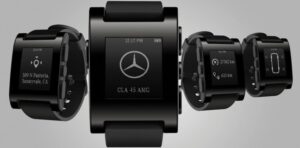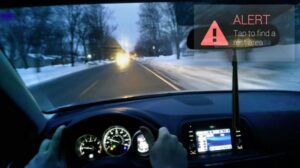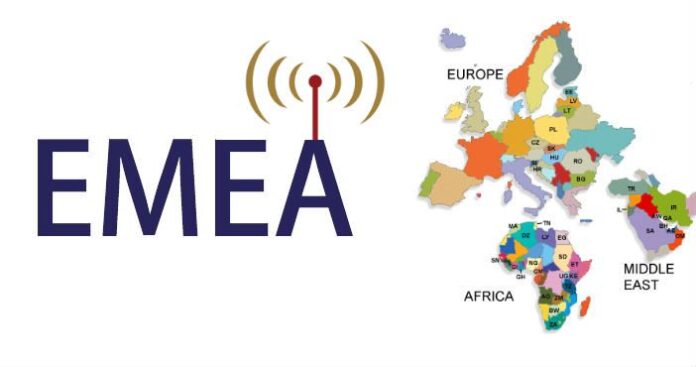Claudia Bacco, Managing Director – EMEA, has spent her entire career in telecom, IT and Security. Having experience at an operator, software and hardware vendors and as a well-known industry analyst, she has many opinions on the market. She’ll be sharing those opinions along with ongoing trend analysis for RCR Wireless News through daily contributions going forward.
I recently watched an interview with Scott Lange, Team Detroit, where he said that “cars are the largest wearable device,” and I think he has a good point. OK, you don’t actually “wear” them, but in a way you do. Your car is a very personal choice that says a lot about your personality and how you want to be viewed by the outside world. So it’s definitely a fashion statement for many people.
 The integration of wearables and connected cars is very real. Mercedes-Benz has integrated with the Pebble Smartwatch. When linked with the app it allows you to check fuel related functions such as the current fuel level, determine the distance left that you can drive and measure the distance you have driven. You can also check the tire pressure, your service intervals and remember not only where you parked your car, but double check if you left it locked or unlocked. We’ve all left our car and gone into our destination wondering if we remembered to lock the doors or not at least a few times in our lives. Additionally you can link media, directions and traffic status. In the future it will also be able to act as a link for vehicle-to-vehicle and vehicle-to-infrastructure communications to warn of upcoming road hazards.
The integration of wearables and connected cars is very real. Mercedes-Benz has integrated with the Pebble Smartwatch. When linked with the app it allows you to check fuel related functions such as the current fuel level, determine the distance left that you can drive and measure the distance you have driven. You can also check the tire pressure, your service intervals and remember not only where you parked your car, but double check if you left it locked or unlocked. We’ve all left our car and gone into our destination wondering if we remembered to lock the doors or not at least a few times in our lives. Additionally you can link media, directions and traffic status. In the future it will also be able to act as a link for vehicle-to-vehicle and vehicle-to-infrastructure communications to warn of upcoming road hazards.
Hyundai is working with Google Glass to enable what they are referring to as “pre-drive functionality.” You can remotely start, lock/unlock and send point-of-interest search information to your car.
 Also working with Google Glass is a start-up called DriveSafe. They are using Google Glass for something called the “keep me awake” feature. They are able to track your level of distraction and drowsiness and alert you to take a rest before you potentially fall asleep at the wheel.
Also working with Google Glass is a start-up called DriveSafe. They are using Google Glass for something called the “keep me awake” feature. They are able to track your level of distraction and drowsiness and alert you to take a rest before you potentially fall asleep at the wheel.
Regulations on the use of mobile phones in cars vary from country-to-country and state-to-state. As regulation specific to Google Glass unfolds, it will be interesting to see how these products are impacted. I have to imagine regulators will be quite strict about the use of Google Glass while driving a vehicle. Although DriveSafe sounds like a very interesting safety tool, I can see how Google Glass could also end up being quite a distraction if not used in the correct context while behind the wheel.
General Motors’ OnStar is already live with a connected car wearable in partnership with Samsung using the Galaxy Gear smart watch. Through this partnership, GM will offer functionality to remotely start, lock/unlock doors, open/close windows and by the end of the year have the ability to beep the horn. Future features will be added to check the oil and fuel level, turn on/off the headlights and find your car. Additionally, they will offer LTE connectivity in cars beginning in 2015.
Speaking of LTE, the Audi A3 was the first to win this race. This car is basically a mobile hot spot. You log on to the car like any other Wi-Fi network and it can support up to eight devices. It’s live in the U.S. in conjunction with AT&T. The car owner has to purchase Audi’s Multi-Media Interface system and it comes with a free six-month subscription for the LTE connection, and after that time a contract with AT&T is required.
Someone jokingly said to me yesterday that you take LTE, add it to a connected car and you have mobile broadband. Kind of a silly joke, but I think Audi has shown this to be a reality. Now only if the smart-watch makers could invent one that actually looks like a watch and not a small smartphone and is still able to do all these things.
Want to learn more about how mobile operators and automakers are getting ready for the connected car? Join Mosaik Solutions, Latham & Watkins, and the Competitive Carriers Association for a webinar on how rural America can prepare for the connected car.

EMEA: The next wearable – your car
ABOUT AUTHOR
